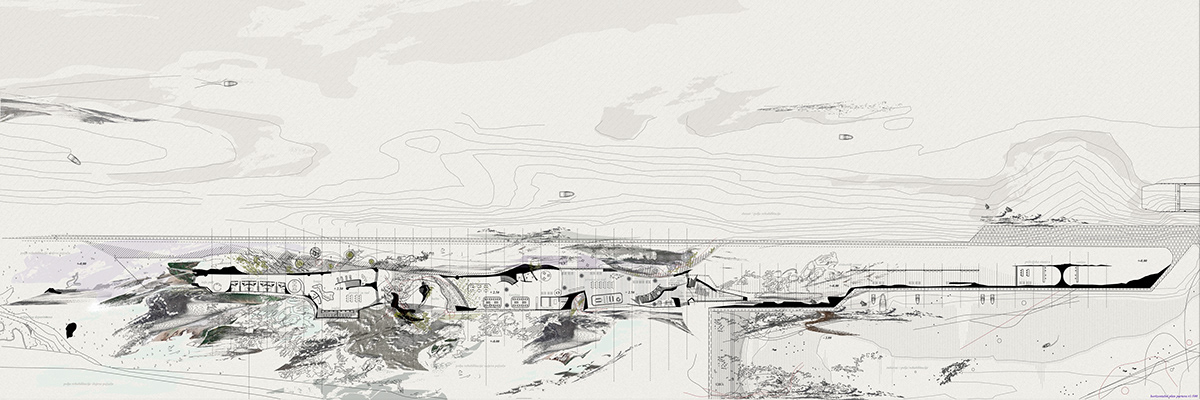mzr | temporality of the landscape
mentorship_ arch. Aleksandru Vuja
faculty of architecture, university of belgrade
year 2022/2023

In the Anthropocene era, human activities have greatly altered and transformed many aspects of the geological environment, usually taking what is considered valuable and leaving behind degraded landscapes /terra infirma/. These landscapes exist somewhere between the city and the desolate wilderness, they have been forgotten and the assumption is that they have always been like that. The term terra infirma according to architect Niall Kirkwood refers to a landscape corrupted and damaged by toxic materials, by previous human use or programs. This research seeks to examine the possibilities of rehabilitation of these types of landscapes, through a deeper understanding of material technology, their application and impact on the "irreversibly damaged landscape". The central hypothesis of this research refers to the temporal feature of the landscape - temporality, and proposes that the landscape is never built, but always under construction, always in process, which is reflected in its constant state of temporality. If we could observe in this way, not only the field we are influencing, but also the upcoming interventions, the possibilities are that we could first of all rehabilitate the landscape, and then stop the production of secondary layers of the landscape and thus enjoy the cyclicity of the primary in its healed form. The origin of this hypothesis comes from the philosophy of archaeologist Tim Ingold [Tim Ingold], who also claims that archeology is the science of the temporality of the landscape, and in order to have a better understanding of this state, a deep analysis into all its previous layers is required, which are under the surface, below the secondary layer. The mentioned method in this research would be used as a tool for layering and understanding the proposed thematic panels, which represent only a fragment of similar ones. A research and educational center with its complementary content is proposed, which investigates and assists the rehabilitation process, and becomes an observer of the cyclical nature of the landscape. The goal is a designed simulation of the regeneration of a toxic landscape, which represents a fragment, later applicable on a larger scale, adaptable to numerous situations of geological transformation that we are currently witnessing.






















